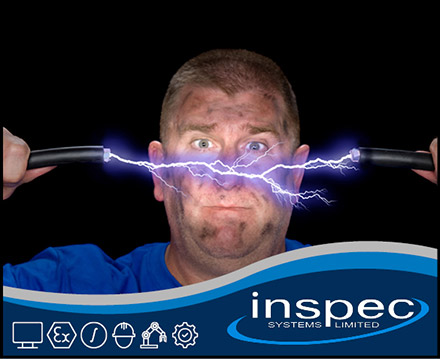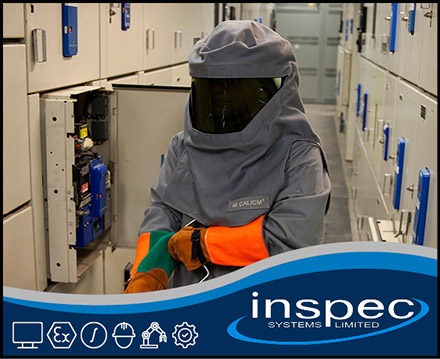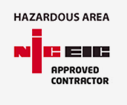ARC Flash
I haven't had to do one before, why do I now?
Arc flash assessments are a relatively new concept in the UK. Risks arising from ARC flash have, however, been recognised in the USA for many years and the American Standard IEEE 1584 sets out guidance for arc flash hazard calculations.
There are numerous regulations which come in to play including The Workplace (Health Safety and Welfare) Regulations 1992, the Electricity at Work Regulations 1989, the Personal Protective Equipment (PPE) Regulations, and the Management of Health and Safety at Work Regulations 1999. All are clear about the need to take all reasonably practicable steps towards preventing risk and injury in the workplace in this case through understanding the strength and capability of your electrical systems, assessing risk, following industry best practice, defining safe systems of work and protective measures.
So, if we have never done them before is there a requirement or Arc Flash Assessments in your business? Ask yourself these questions:
- Do I use Electricity in my business?
- Is there a risk that an electrical fault could give rise to electrical arcing?
- Do I understand my electrical system sufficiently to know whether an electrical fault causing an arc could give rise to injury?
As a duty holder YOU have a duty of care to provide sufficient information and instruction to all personnel, including subcontractors, to ensure their safety when working on your systems. Using a competent contractor does not absolve you of this requirement, they don't know your systems!
But what is an Electrical Arc?
A bolt of lightning is likely to be the most accessible visual example of an electrical arc, albeit one that forms in nature. A more complex definition is that a discharge of electricity due to a breakdown of an insulator (usually air) caused by a high electric field strength which ionises the insulator reducing its nonconductive properties forming an electrical arc. This arc is then fed by molten metal and the ionised air creating a conductive mixture called plasma - the visual bolt of lightning, spark, or flash that is seen.
Some electrical arcs are of a very low energy yield and are on the face of it harmless, ever seen that flash as you turn the lights on? But even these low energy flashes need attention as they can systematically degrade insulation leading to risks arising from higher energy arcing as well as heat and fire risks.
What can cause an electrical arc?
The EAWR challenges the need for live working, but the practice continues. It is easy to understand how, if someone is working on or close to live conductors, they could unintentionally cause a short circuit by dropping a spanner or connecting live parts to earth with wiring.
Arcing can, however, occur on equipment not being worked on - loose connections, dirt, moisture, and other factors can cause insulation to break down over time.
When this happens, it goes with a BANG and although lasting only fractions of a second (if the protective devices do their job) you remember it for a lifetime, should you live to tell the tale! Depending on the energy within the arc, where you are standing and what levels of PPE you are wearing makes the difference between recounting it to your mates in the pub, explaining it to a doctor in A&E, or meeting the big man in the sky!
What are the risks of an Electrical Arc?
There are numerous videos on the internet showing what can go wrong when an electrical arc forms.
With a core temperature of 50,000?C and a surface temperature of 20,000?C, compounded by a pressure wave of up to 200psi and sound waves up to 165dB, the dangers presented to anyone unfortunate to be close enough are obvious. Hearing and/or sight loss, burns, being struck by projectiles, having your organs turned to liquid, inhaling toxic fumes and plasma, melting clothing, and evaporating metals - without appropriate measures the likelihood of survival is very low.
Arc Flash Assessment
Assessing the risks arising from arc flash is a complex process which requires the following basic information which all sites should have on standby should the HSE Inspector come visiting:
- An understanding of the electrical distribution system including single line diagrams covering a range of important data such as identification, ratings, voltages, supply characteristics.
- Knowledge of the fault levels throughout the system - these are calculated bespoke to each system based on the supply characteristics and the electrical distribution system.
- Protective device selection and co-ordination including their type, characteristics, ratings, and settings.
- Cable details such as identification, type, voltage, cross sectional area, and material.
- Switchgear physical characteristics including the dimensions of cubicles and any arc flash measures.
Arc Flash Assessments calculate the energy of an arc at a given switching point which inform your arc flash risk assessment.
How do I limit the impact?
There are numerous control measures to consider which typically include:
- Elimination and avoidance through safe by design practices, arc flash control measures and constructing arc resistant assemblies.
- Reduce the arc energy through a review of the protective devices, types, characteristics, and settings - providing better co-ordination and using current limiting devices can break the arc at appoint in the waveform before it has reached its full potential.
- Implement safe working procedures that correctly identify safe working methods, a preference for working dead, application of lock-out-tag-out (LOTO), labelling and warning signs, as well as the ability to remotely operate and rack equipment.
- Arc detection and tripping systems through arc flash detection devices (AFDD).
- And the last line of defence when no other measures can be deployed - PPE.
For obvious reasons the decision to put someone in harm's way should be a last resort. Depending on the result of the arc flash calculations PPE should be selected, and maintained, to provide the right level of protection for the energy levels within the working area and should consider all items being worn by the person in question - down to their underwear!
What do I do?
Talk to us. We can't promise to do it in a flash, but we can offer pragmatic advice and help you on the road to compliance.
















